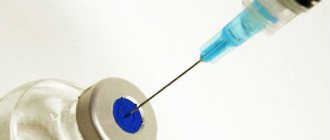A mother's main job begins with the birth of her baby. It is especially important to prepare for feeding. With the right attitude, the baby will be full, which means the mother will be happy and calm.
During pregnancy, the body actively prepares for lactation. Frequent advice - to avoid stress in every possible way - is also relevant for lactation. Stress is not only various worries, unfavorable events at work and in personal life, but also overwork. Stressful conditions affect hormonal levels, which can lead to problems with milk supply.
A pregnant woman needs to concentrate on the positive aspects, creating favorable circumstances for bearing a child.
Preparing for feeding - breast massage
In children's clinics there are still posters on breastfeeding with advice to rub your breasts with a rough washcloth and put hard rags in your bra. Now these methods are no longer relevant, moreover, they are not recommended by mammologists. Irritating actions increase the risk of cracked nipples during feeding.
To maintain the shape of the bust and prevent lactostasis, mammologists advise performing a small massage. The mammary glands are kneaded with gentle movements in a circle. It is also recommended to do a relaxing massage in the shower with streams of water from a watering can or using a soft washcloth.
During pregnancy, a woman should pay attention to the shape of the nipple. If the shape of the nipple is retracted (when it is in the dimple) or flat (when the nipple does not protrude above the areola), then you need to regularly massage them with pulling movements of your fingers using baby cream.
Proper latching of the baby to the breast allows you to avoid microtraumas, and the baby receives milk and does not remain hungry. Therefore, it would be a good idea to study information on methods of breastfeeding and what proper nipple latching looks like. A lactation specialist can also provide assistance with breastfeeding.
What exercises and massage can you do?
Breast massage for nursing mothers
A gentle manual massage perfectly prepares the breasts for feeding the baby and performs a number of other useful functions:
- Prevention of lactostasis. Even if there are areas with stagnant milk in the mammary glands, they are activated.
- Improves blood circulation, which strengthens the breasts and increases lactation.
- Oils that are recommended for massage during feeding tone the skin and help get rid of stretch marks.
Technique of massage manipulations
:
- palms are lubricated with natural oil;
- the left hand is placed under the mammary gland, the right hand above it;
- The breasts are massaged in a circular motion;
- then the massage turns into stroking movements towards the nipple, gradually covering the entire surface of the mammary gland.
The nature of the touch is delicate and light, without causing discomfort. The oil should not touch the nipple and areola. This care is recommended after each feeding for 3-4 minutes.
Exercises for nursing
Exercises for pregnant women were listed above, now you can turn to those that are intended for nursing mothers.
Exercise will help improve the quality of feeding, since movement increases blood flow, which contributes to better milk production.
It is necessary to exercise in doses so that lactic acid is not produced in the muscles, which will make the baby’s food taste bitter.
Exercise No. 1
- palms folded in front of you, elbows placed at chest level;
- pressure is created between the palms for 10 seconds;
- repeat – 5 times.
Exercise No. 2
- straight arms rotate around the shoulder joint in a circular motion;
- manipulations are performed first with one hand, then with the other.
Excessive exercise can spoil your milk!
Exercise No. 3
- The hands imitate movements as in breaststroke swimming.
Exercise No. 4
- palms are placed in the armpits;
- Elbows make circular movements forward/backward.
Exercise No. 5
- in a tilt parallel to the floor, swing your arms to the sides.
Nursing bra A special bra is an integral part of preparing the mammary glands for feeding. Under no circumstances should it squeeze the chest, but at the same time, you should not take a size “for growth.” The straps of the product should be wide and well adjustable and secure the mammary glands. It is advisable to choose a model made from natural fabrics that will provide access to oxygen. A properly selected bra is also necessary to maintain the shape and firmness of the bust.
Additional physiotherapeutic procedures to improve lactation
:
- breast baths with warm water;
- shared bath with only warm water for relaxation;
- warming hands and feet in hot water before feeding;
- acupuncture or special applicators on the back;
- massage of the collar area, the area of the back between the shoulder blades.
What you need to prepare in case of force majeure
After the baby is born, he is brought to the breast, and the baby receives his first food - drops of colostrum, and also gets acquainted with the mother's immunity. At the same time, no one is immune from the occurrence of moments that prevent the baby from feeding from the first hours of life.
Surgeries during childbirth, including caesarean section, can delay the flow of milk, and situations may also arise when the baby is separated from the mother in the hospital. Therefore, you can choose and buy a breast pump in advance.
Constant pumping before each feeding stimulates the production of prolactin, a special hormone that is responsible for lactation. Gradually, the amount of milk with regular use of the breast pump will increase, and the baby will not remain hungry.
How to express breast milk by hand
A step-by-step guide to manually expressing breast milk should be in every breastfeeding mom's arsenal. Hand expressing is a difficult skill to master and requires practice. Neonatologist Valeria Maksimovna Shchelkunova explains how to express breast milk manually and why manual expression is the most effective alternative to a breast pump for women with stagnation of milk in the breast and babies who cannot latch onto a full breast.
— Valeria Maksimovna, please tell me, is it necessary to express breast milk? What benefits does pumping bring to the female body?
— Expressing milk is not a routine event for a nursing mother. It is used only in certain cases, primarily for medical reasons.
When to express breast milk:
- in the first days after the birth of the baby, when milk comes in sharply;
- for the prevention of mastitis due to stagnation of milk;
- with mastitis, when breastfeeding is no longer possible;
- due to the health of the baby, when the mother does not breastfeed, but wants to maintain lactation, or when she feeds the baby with expressed milk;
- it is necessary to give the child medications;
- for medical research on breast milk;
- the mother is physically unable to breastfeed because she is away from the baby.
Is hand expressing healthier than using a breast pump?
— In my opinion, there is no particular difference. Expressing by hand is more effective for lactostasis: an electric breast pump does not completely empty the breast; it is easier to do this manually. But we cannot say for sure that expressing milk by hand is healthier.
— Is it possible to perform manual expression if you have previously used a breast pump with a bulb or an electric device?
- It’s more likely necessary. Neonatologists recommend combined pumping, especially during congestion, mastitis and establishing lactation, as well as during the period of hypogalactia. A breast pump does the job faster, but you can only fully express breast milk with your hands. Therefore, a combination is used - expressing the mammary glands with a breast pump and hands.
— When is hand expression contraindicated?
— In general, there are no contraindications to this type of pumping. There may be restrictions in case of damage and cracks in the nipples, when pumping is unpleasant and it is better to abandon it for a while. It is also advisable not to touch the breast if it has herpetic lesions.
— The technique of hand expression is not as simple as it seems, especially when a woman expresses breast milk by hand for the first time. What mistakes do new mothers make?
— You need to understand that pumping one breast can take about 30 minutes, although more often women do not spend that much time. It happens that after five minutes from the start of the procedure, milk in one breast stops being released, and mothers stop working with it. In such a situation, you need to completely express the breast, switch to the second, then return to the first, and before expressing, massage the breast gland. And so on until milk production stops: after all, while the mother is expressing one breast, milk is being produced in the other breast.
When establishing lactation, it is not recommended to express two breasts at once: empty one breast first, and the other at the next feeding. Pumping is done after the baby has eaten.
Sometimes mothers make excessive efforts when pumping and try so hard that bruises and cracks remain on the nipples. Hand expression is normally a completely painless process and should not be unpleasant.
Another omission on the part of breastfeeding women is their reluctance to seek the help of professionals. If you can’t pump, and breastfeeding causes discomfort and pain, you need to contact a lactation consultant.
— When is it better to express by hand: in the morning, during the day, in the evening or at night?
— General recommendations for pumping are always supplemented by individual ones, since the process depends on the reasons for pumping.
How often to express breast milk
| Expression task | Expression frequency |
| increase in lactation | after each feeding, including at night |
| maintaining lactation if the mother does not breastfeed at night | every 2.5-3 hours |
| getting rid of lactostasis (stagnation), mastitis | every hour, regardless of the biorhythms of the child and mother |
| leave the child for a while | depending on the situation - at night, in the morning or after feeding |
| Expression task increase in lactation | Expression frequency after each feeding, including at night |
| Expression task maintaining lactation if the mother does not breastfeed at night | Expression frequency every 2.5-3 hours |
| Expression task getting rid of lactostasis (stagnation), mastitis | Expression frequency every hour, regardless of the biorhythms of the child and mother |
| Expression task leave the child for a while | Expression frequency depending on the situation - at night, in the morning or after feeding |
Expressing breasts at night is the most effective. At night, prolactin is produced, a hormone that is responsible for lactation. In addition, physiologically, the baby eats less at night, so more milk accumulates.
— How to express breast milk - before or after feeding the baby? Does mom need to eat well before pumping?
— Pumping before feeding is contraindicated, except in a few situations. In this case, food intake does not affect lactation, but a hot drink 10-15 minutes before pumping, as well as breast massage and a warm shower before this procedure, have a beneficial effect on milk production.
When is it useful to express breasts before feeding:
- the breast is too full and the baby cannot latch onto the nipple;
- the shape of the nipples is flat or inverted, and it is difficult for the baby to grab onto the breast, especially in the first days after birth, when the milk arrives and the breasts increase sharply;
- you need to give the child medicine. For example, in case of lactase deficiency, the necessary enzymes are added to the first portion of milk, which is richest in carbohydrates. Some children are given a breast milk fortifier, which is diluted to a certain amount of nutrition (after feeding, there may simply be no milk).
— Is it necessary to express after each feeding?
— Previously, this was a fairly common recommendation, but now it is strictly according to indications: for example, if you need to increase the volume of lactation or develop breasts. If lactation is well established, the mother has no health problems, the baby is fed and happy, and is gaining weight well, then there is no need to express after each feeding.
Working mothers who are constantly away and absent for certain periods of time are advised to express every feeding in order to maintain lactation, even if there is enough milk. Because a working mother feeds at a slightly different rhythm, not the way a child physiologically eats, and the breasts need to be stimulated additionally.
— And if the child eats often, but little by little, and asks for additional feeding, will pumping help?
— This happens more often with hypogalactia. The solution to the problem is the consistency and regularity of pumping after feeding the baby. The resulting milk can be used as a supplement.
Of course, the volume of expressed milk is not always enough to feed the baby. In such a situation, in addition to supplementary feeding with expressed milk, supplementary feeding with formula is prescribed. But constant pumping should lead to an increase in milk, and over time the amount of supplementary feeding will decrease. In each case, it is important that the issue of lactation and supplementary feeding is resolved with a doctor. You should not deal with the problem yourself, since it is very easy to aggravate the situation and, with incorrectly selected supplementary feeding, on the contrary, reduce lactation.
— How can you tell whether breast milk has been fully expressed or not?
- Milk stops coming out even after a massage, breast change and all the manipulations that we have already mentioned, or more than half an hour has passed since the start of pumping. Some women describe the state of empty breasts as “rags.” Typically, breastfeeding women know when their breasts are empty and when to stop.
— If only a little milk came out during pumping, should the mother worry? Is it possible to supplement a baby with formula?
- If the mother did everything correctly, but she really has little milk and was unable to express it in sufficient quantities, then, of course, the doctor will prescribe supplementary feeding with formula. Over time, they try to reduce the volume of the mixture and bring lactation to physiological levels.
— Are MAMAKO® Premium baby formulas with goat milk suitable for supplementary feeding if there is not enough breast milk?
- For healthy kids - absolutely. Goat milk formulas are generally better digestible because the protein in goat milk is more similar to the protein in breast milk. At the same time, not being a hypoallergenic mixture, this product is well tolerated and is suitable for the prevention of food allergies in infants, especially those with a family history. Therefore, I recommend goat milk formulas; children tolerate them well.
— Valeria Maksimovna, what techniques and methods of manual pumping exist? How to properly express breast milk by hand for the first time?
— There are a great many techniques. Let's focus on the most common, simple and effective method.
Preparation of the breast - follow the rules of hygiene, start lactation and ensure milk flow
- Be sure to wash your hands with soap. Breasts do not always need to be washed - a daily shower and clean underwear are enough. There are beneficial microflora on the surface of the breast, and it is good if it gets into breast milk.
- Mom takes a comfortable position, usually sitting with support under her back.
- One hand is above the breast, the other massages the mammary glands towards the nipple.
Breast pumping - how to fully express breast milk
- Grasp the breast from opposite sides of the nipple with two fingers so that the thumb is on top and the index finger is below.
- Gently and gently squeeze the areola towards the nipple, bringing your fingers together. Wait until the first drops of milk appear.
- Increase the pace after the milk comes in, making rhythmic movements and imitating sucking.
- Move your hands around the circumference of the areola to get milk from all parts of the mammary gland and completely empty all lobules of the breast.
— Are there any specifics in preparing for pumping before and after feeding?
- In both cases, actions are possible that will increase the effectiveness of manipulations. If pumping occurs without first feeding the baby, it is recommended to take a warm shower or put something warm on the chest area 10-15 minutes before the procedure, give a massage and only then start pumping.
With natural stimulation of lactation, when the baby has eaten and the remaining milk is expressed, no additional preparation is required. Without prior preparation, you can also organize parallel pumping and breastfeeding, when the baby eats from one breast and the mother expresses from the other breast.
— Do special teas or folk remedies help ease lactation and hand expression?
— Special lactogenic teas stimulate milk production, but only slightly, and in case of serious problems, its increase may be unnoticeable. To activate lactation, it is not the composition of the drink that is important, but its temperature. Any warm drink (water, tea, compote) has a beneficial effect. In addition, the process of pumping itself is a stimulation of lactation - the more milk goes out, the more will come.
— Is hand expressing really preferable during congestion?
— Lactostasis is a blockage of the excretory ducts of the mammary glands. With stagnation, the mammary gland cannot empty itself. Expressing by hand during lactostasis is preferable because it is less painful and more effective - you can use your hands exactly at the site of stagnation, massage well and empty the entire lobule to the end. No breast pump will do this. The device expresses evenly and cannot break the stagnation, leaving milk in the breast, which will have to be expressed with your hands.
— How to express breast milk with your hands during stagnation and what other nuances should a woman know?
— A woman must identify the problem area in herself: although it sounds difficult, it is quite simple to do. You need to find a painful lump in the breast and start pumping from this lobule - gently massage it and gently press on the breast so that it is completely emptied. Mom begins to act from the periphery to the center and presses on the breast from the “problem” lobule to the nipple so that the milk comes out. In 99% of cases this is painful, but it is very important to undergo this procedure - otherwise stagnation can develop into mastitis. After emptying the lobule, the woman will feel relief.
— What advice can you give to all breastfeeding mothers for easy and productive pumping?
— My recommendation is not to focus on manual expression. The most optimal and effective option is to use mixed pumping. It's both easier and faster. First, a breast pump is used, and then the breast is completely emptied manually. Do not forget about physical methods of stimulating lactation - heat, massage of the mammary glands.
There is no need to express milk without reason. The procedure leads to its increased production, which in turn is fraught with lactostasis and mastitis. In order to eliminate mastitis in a more gentle and comfortable manner, a combined pumping method is used. You should consult a specialist about pumping as a way to increase lactation. The main thing is to remember: proper pumping will always be comfortable for the mother, and if something doesn’t work out, you need to turn to a professional.
Neonatologist Valeria Maksimovna Shchelkunova
*The ideal food for an infant is mother's milk. WHO recommends exclusive breastfeeding for the first 6 months. MAMAKO® supports this recommendation. Before introducing new foods into your baby’s diet, consult a specialist.
The baby is born! How to feed?
There are two approaches to feeding - on the clock or on demand. Each of them has its pros and cons. You can study both methods in advance to decide, or you can try them one by one to understand which one is closer to mother and child.
In both cases, there remains the possibility of a lactation crisis, when the amount of milk suddenly decreases, or the baby’s demands increase. Patience and calmness, as well as the advice and assistance of an experienced mammologist, will help in this situation.
Not always and not everyone’s breastfeeding goes smoothly the first time. The main thing is to be patient and believe in yourself.
Heredity and breast sensitivity
Of course, heredity has a huge impact on the sensitivity of the skin and nipples. It is on this that the predisposition to special sensitivity of nerve endings and an overactive reaction to external stimuli (sucking and biting of the nipple by a child) depends. If a pregnant mother had sensitive nipples and cracks during breastfeeding, then her daughter has an increased risk of developing the same condition. But if a pregnant woman takes proper care of her body, takes care of her nipples, leads a healthy lifestyle, and eats right, then she can prevent possible consequences for her health. A lot also depends on proper care and lifestyle.
The most relevant and useful information for modern parents is in our newsletter. We already have over 30,000 subscribers!
Does breast shape and size affect breastfeeding?
What you shouldn’t do: become despondent at the thought that breastfeeding will ruin the shape of your breasts - and even more so, figure out how to end lactation early. The reality differs from accepted ideas: in fact, the shape of the breast does not change during feeding, but during pregnancy!
As the birth approaches, the breasts enlarge - glandular tissue develops in it, which, after the baby is born, will produce milk. Some of the adipose tissue is also replaced by glandular tissue. The peculiarities of breast tissue are such that adipose tissue holds its shape quite well, but glandular tissue does not hold its shape at all; nursing breasts become engorged only due to the fact that the glandular tissue contains milk.
The reverse process should also occur gradually - after the introduction of complementary foods, with a decrease in the child’s need for milk, the glandular tissue begins to be replaced by adipose tissue again. If feeding ends before this time, the breasts until the next feeding will remain in the same condition as they were at the end of lactation, that is, with a predominance of glandular tissue, which means, alas, saggy. And, oddly enough, thanks to this feature of the female body, after prolonged breastfeeding, breasts can retain their shape better than without breastfeeding!
In addition, heredity plays a very large role in whether breasts lose their shape after feeding or maintain them. How elastic the breast skin is also contributes.
What you can do, but not necessarily: if the expectant mother is not able to influence her heredity, and the duration of feeding depends primarily on her own mood, then you can do something in advance to increase the elasticity of the skin of the breast. A contrast shower has a positive effect on the elasticity of the skin of the breast; some mothers speak well of the use of special creams for pregnant women that preserve the elasticity of the bust. However, when using such creams, be careful: if you continue to use them after childbirth, there is a possibility that such cosmetics may repel the baby with their smell, or even cause irritation when in contact skin to skin.
What to take care of: What is really important for maintaining the firmness and overall health of your breasts is good supportive underwear. For mothers with large breasts, it is better to start using a supportive bra in the last trimester of pregnancy, and then use it throughout the feeding period. If the breasts are small, then a support bra is especially relevant in the first weeks of feeding, when breasts of size A or B after the arrival of milk can very sharply increase in size to C or even D. The optimal bra for feeding is seamless (since pressure from the seams can contribute to stagnation milk), elastic (e.g. microfiber) and distributed support. It is quite possible to buy such a bra during pregnancy, because it changes its size along with the growing breasts and continues to support them well, despite large fluctuations in size.
You should also definitely think in advance about comfortable clothes for feeding in the maternity hospital and at home: either with special slits in the front, which can be ordered on many sites on the Internet by searching for “clothes for feeding,” or at least with buttons or a zipper. In practice, very often after giving birth, first-time mothers are surprised to discover that the clothes that they prepared for a comfortable stay in the maternity hospital are not at all adapted to enable them to easily and elegantly breastfeed their baby at any time and actually feed him first requirement.
How is the recovery period going?
After the operation, a fixing bandage is applied to the mammary gland, which must be worn for about 2 weeks, removed only for dressings. Hematomas and swelling may appear around the nipple, which soon go away on their own. The sensitivity of the nipple will decrease somewhat at first, but then return in full, and all seams will eventually become completely invisible.
Nipple retraction is a problem that has a solution. At the same time, it can also be a symptom of a serious pathology. Therefore, if it is detected, we recommend immediately contacting the specialists of our clinic. To make an appointment with a SM-Plastic surgeon, just call: +7 (495) 777-48-05.
How do you know when you have enough milk?
If the child has walked at least once during the first day, then it’s already good. On the second day, the stool becomes light brown with a hint of green, the norm is twice. On the third day, the stool becomes even lighter due to mother’s milk, and the child has bowel movements three or more times. On the fourth day a yellow tint appears, the norm is three to four times. If by this time the stool is still dark or occurs rarely, then you should consult a doctor.
It happens that the baby often attaches to the breast, hangs on it for a long time, but receives little milk. In most cases, the cause of this situation is ineffective sucking. Try supplementing your baby with expressed milk and see how he reacts. Perhaps in a few days the sucking will improve and it will be possible to stop supplementary feeding and leave only the breast.
What should you pay attention to in the first days after birth?
First breastfeeding after childbirth
The first day after birth is very important, and during this period it is advisable to hold the baby to yourself as often as possible and maintain contact with him, feeding him on demand. All this will help the child calm down and overcome postpartum stress. After birth, the baby sleeps, eats and cries a lot. But crying is not always caused by hunger - most often the child reacts by crying to the stress experienced during childbirth. In order to calm the baby, it is enough to simply take him in your arms and offer the breast.
On the first day, the baby may regurgitate amniotic fluid. In such an uncomfortable situation, he may refuse to breastfeed. Don't worry, the situation usually resolves within 24 hours.
What should breast milk be like?
Colostrum is not milk yet
There is not as much colostrum as milk - sometimes only drops of colostrum are released. Often the mother thinks that this amount may not be enough for the child. However, it is not. On the first day, the baby's stomach is very small - the size of a cherry (volume 5-7 ml). But colostrum covers all the baby’s needs in the first days, because it contains very little water and a lot of calories.
Colostrum can be considered the baby’s “first vaccination”, because it is not so much food as it is an immune defense factor. Therefore, it is very important to frequently put your baby to the breast in the first days after birth: he will be regularly saturated with high-calorie drops and gradually prepare for the transition to breast milk. In addition, colostrum has a laxative effect, as a result of which meconium (original feces) in the baby's intestines changes to normal stool when breastfeeding. Colostrum also helps remove bilirubin, which prevents jaundice.









